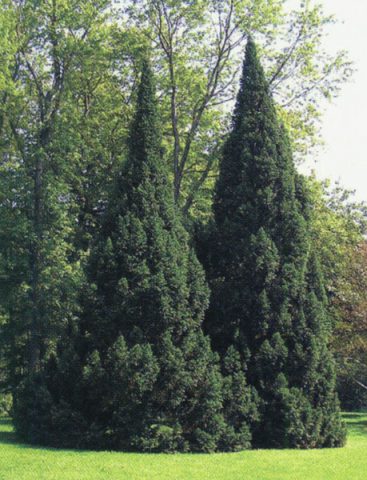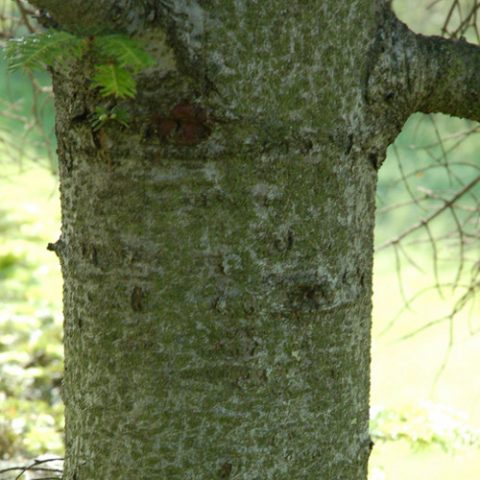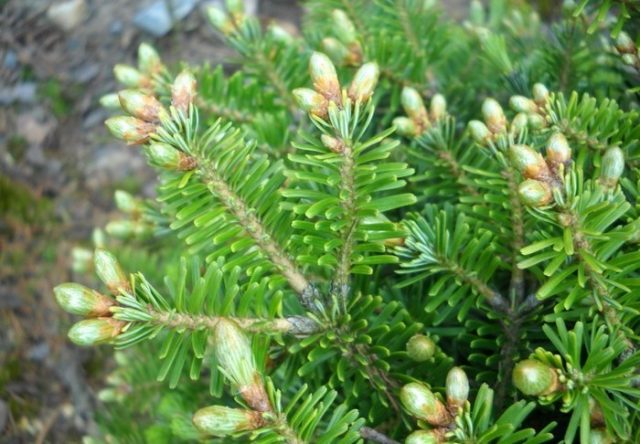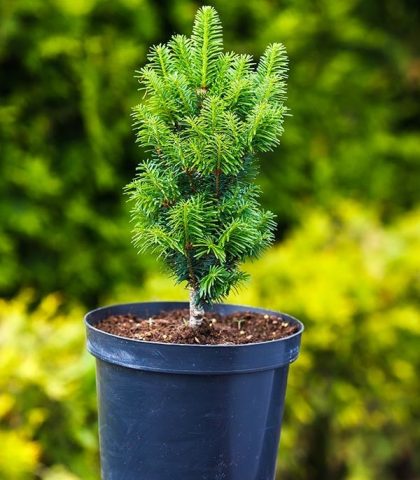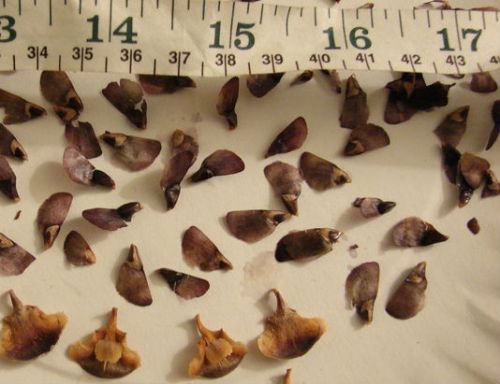Content
Fir in Russia can hardly surprise anyone. After all, it is these trees that make up most of the Siberian taiga forests. But the white fir differs from its closest relatives in its greater finickyness to the growing conditions. Therefore, even on the territory of the Moscow region, and even more so in the vicinity of St. Petersburg, it takes root with difficulty. But in Europe, these trees can be found everywhere, both in the wild and as a decoration for parks and gardens.
Description of European fir
Like most of its relatives, the white fir belongs to powerful, tall trees. This is a typical representative of evergreen conifers. It is monoecious and dioecious. It also has other names - European fir, which characterizes the main areas of its growth. And comb fir - according to the growth form of its needles.
White fir trees reach a height of 30-50 m, and this is far from the limit. In natural conditions, they can even grow up to 65-80 m.
In the first years of life, the white fir grows in the form of a pointed pyramid. With age, the crown becomes more oval, and the top begins to dull. At an advanced age, the shape of the tree from above looks more like a huge nest. The crown can be spread in a diameter of 8-12 m.
The European fir has a smooth silvery-gray bark, which can be clearly seen in the photo.
It remains smooth for a very long time and only with age can characteristic scales appear on it.
The central trunk is straight, and the lateral branches grow in an almost horizontal direction, only their ends are slightly raised upward.
Shoots at a young age have a green color and pubescence, then turn brown, black warty spots appear on them.
Buds are brown, ovoid, resinousness is absent.
The needles of the white fir look very attractive: they are dark green and shiny on the top, and have two white stomatal stripes on the bottom. The needles are not very long (up to 3 cm), but rather wide and flat (2.5 mm). Their tips are blunt or have a small notch. And they are located in the form of a comb, which served as the basis for one of the specific names of the white fir. The lifespan of individual needles is 6 to 9 years.
The cones of the trees are quite large, they reach 10-15 cm in length and -3-5 cm in width. They grow straight up in the white fir, slightly resembling candles, as in the photo.
In an immature state, they are greenish-brown in color. Ripening, they turn reddish brown. The triangular seeds are large in size, reaching a length of 1 cm. The shade of the seeds is dark brown, and the wings are light and twice as large in size.
In the climatic conditions of the Moscow region, white fir does not form pollen and fruits.
Trees can be safely attributed to centenarians. Their lifespan is 400-600 years, and according to some sources they live up to 700-800 years.
White fir is characterized by a deep root system. In addition to the central root, large and strong lateral roots grow. However, trees do not tolerate drought well and prefer to grow in well-moist, fertile soils.At the same time, swampy soils are also not suitable for her successful growth.
Trees also have a hard time tolerating gas pollution and smoke.
In its natural growing conditions, white fir can be classified as a fast-growing tree species. Especially its growth accelerates after the tree reaches 10 years. But in the conditions of the Moscow region, it grows and develops very slowly. The growth per year is no more than 5 cm. Thus, a tree at the age of 15 does not exceed two meters in height.
White fir, according to European standards, is a fairly frost-resistant tree, but at temperatures below - 25 ° C it can freeze slightly. Young plants and tops of branches formed in the previous season are especially susceptible to frost. Therefore, these trees are rarely used in landscaping areas located at the latitude of Moscow and to the north. But on the territory of Ukraine, the south of Belarus and the Baltic States, they are quite widespread.
White fir in landscape design
In nature, white fir most often grows in mixed forests along with beeches and spruces.
In culture, it is actively used to decorate forest park areas and other long green spaces. It goes well with larch, birch, maple and spruce.
However, given the decorativeness of the white fir needles, as well as its cones, it can decorate the space in the form of a lonely standing tree.
Planting and caring for white fir
The European fir planted in favorable climatic conditions for its growth will not require particularly careful care.
Seedling and planting plot preparation
White fir feels good in open sunny areas, but it can easily endure semi-shady conditions.
It grows best on loose, rather wet sandy loam or loamy soils. The reaction of the soil is desirable slightly acidic, it can also be neutral. In the presence of swampy, heavy or poor dry sandy soils, you need to take some measures to improve them. For heavy soils, add sand or peat. Poor sandy soils will require the addition of humus, at least to the planting hole.
On the one hand, the soil must retain moisture well, on the other hand it is important to provide good drainage so that the water does not stagnate.
Young plants of white fir are planted in the ground in the spring. Although the planting pit can be prepared in the fall. In size, it should fully correspond to the volume of the root system with an earthy clod.
Humus, peat or sand are added to the pit, depending on the properties of the original land.
Landing rules
The roots of white fir seedlings, like those of many conifers, do not withstand even short-term exposure to air, and even more so to the sun. Therefore, plants should be transplanted only with an earthen clod to ensure good survival in a new place.
The planting depth should match that at which the seedling grew in the nursery.
After planting fir, the ground is thoroughly tamped and covered with a layer of coniferous bark or litter from the nearest pine or spruce forest.
Watering and feeding
European fir is a rather moisture-loving tree, so it must be watered at least 3 times per season. Depending on the age of the tree and the volume of its root system, each plant can take from 5 to 15 liters of water. In dry periods, watering is required more often - up to 5-7 times per season.
Since the white fir is bad for dry air, at a young age it is advisable to spray its crown regularly, at least once a week.
In the first year after planting, European fir does not need special feeding. As a rule, the plant has enough of the nutrient medium that was provided to it during planting. In the second year, once a season, you can use fertilizers specially designed for conifers for feeding.They can be in the form of granules that can be applied under the mulch layer or in liquid form.
As a last resort, Kemiru-wagon is used for top dressing in a proportion of 150 g per 1 sq. M. There is no particular need for feeding adult trees over the age of 10 years.
Mulching and loosening
White fir grows and develops best when using a layer of organic mulch placed in a circle with a diameter of one meter around the trunk. Any organic matter is suitable as mulch: straw, hay, sawdust, chopped bark, peat, nutshells.
Pruning
White fir does not need formative pruning, moreover, it does not react very positively to it. But sanitary pruning, which consists in pruning the frozen ends of the branches in May, will be very useful. It is also good to regularly remove possible dry or yellowing branches to prevent and protect against possible pests or diseases.
Preparing for winter
It is especially important to prepare young, newly planted white fir trees for winter. The near-stem circles are additionally covered in autumn with a layer of dry leaves, at least 8-10 cm thick.
And the trunks with branches are plucked with spruce branches. This shelter can also be used at the time of repeated frosts in late spring, when young branches are especially vulnerable to frost.
Reproduction
White fir propagates both by seeds and vegetatively (semi-lignified cuttings, layering or grafting).
Seeds can be sown before winter. For sowing in spring, they are stratified in a cold room for 1-2 months, after which they are germinated in moist light soil at a temperature of about + 20 ° C.
When white fir is propagated by cuttings without the use of special stimulants, about 25% of cuttings collected in winter take root.
Diseases and pests
White fir is rarely affected by diseases and pests. But in case of any problems, spraying with phytosporin and phytoverm solutions can be used.
The use of white fir
White fir is a valuable plant that is used for a variety of needs. For medical purposes, the resin is very important, which is extracted from the tree trunk in the summer. From one fir, you can get up to 50 g of a healing substance.
The needles are rich in ascorbic acid. And from the bark, young shoots and cones, the most valuable fir essential oil is extracted. It is used to cure respiratory diseases, heart problems, and rheumatism. It is also widely used in the manufacture of various drinks, in perfumery and cosmetics, in printing.
Fir wood can be used for building and making musical instruments.
Conclusion
White fir is an interesting tree that is especially attractive at a young age. But it is better to plant it in regions with a relatively mild climate.
